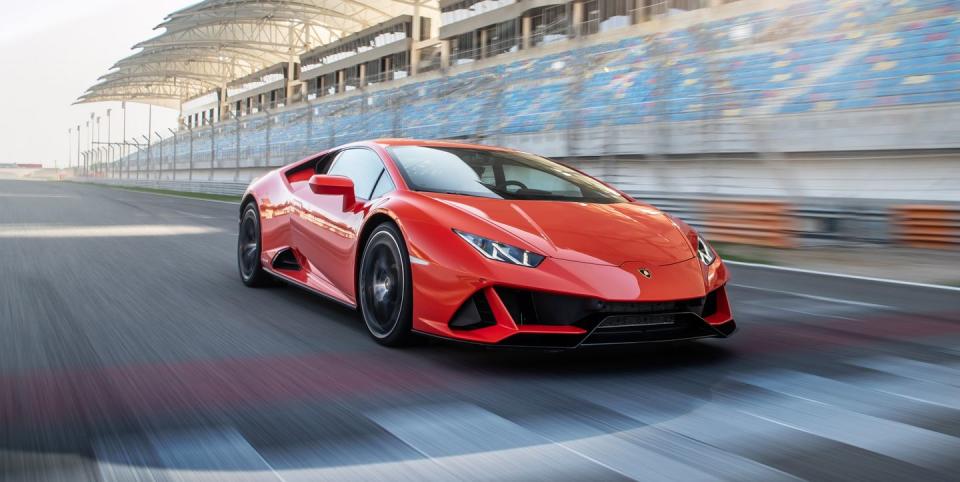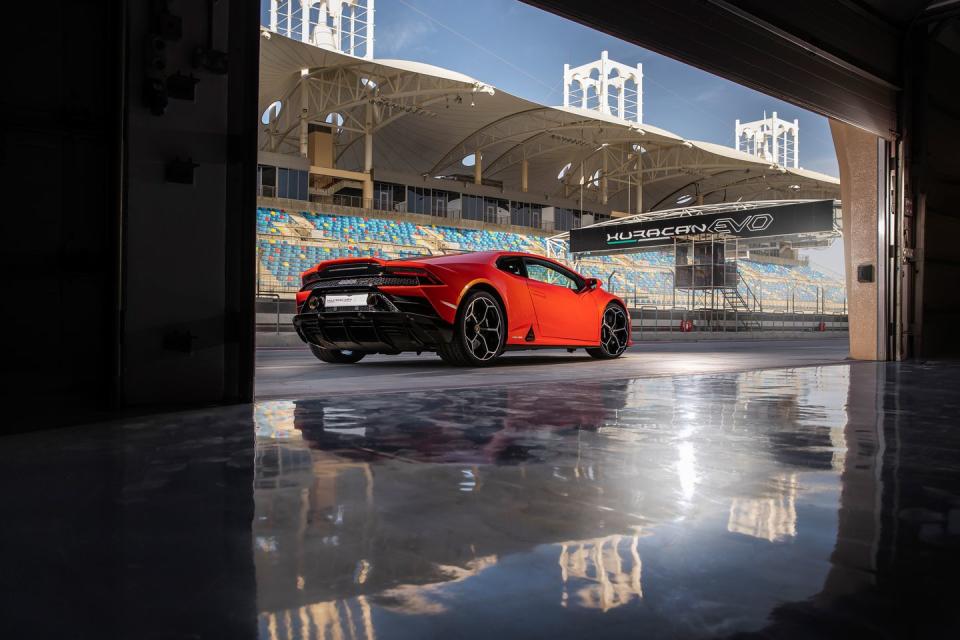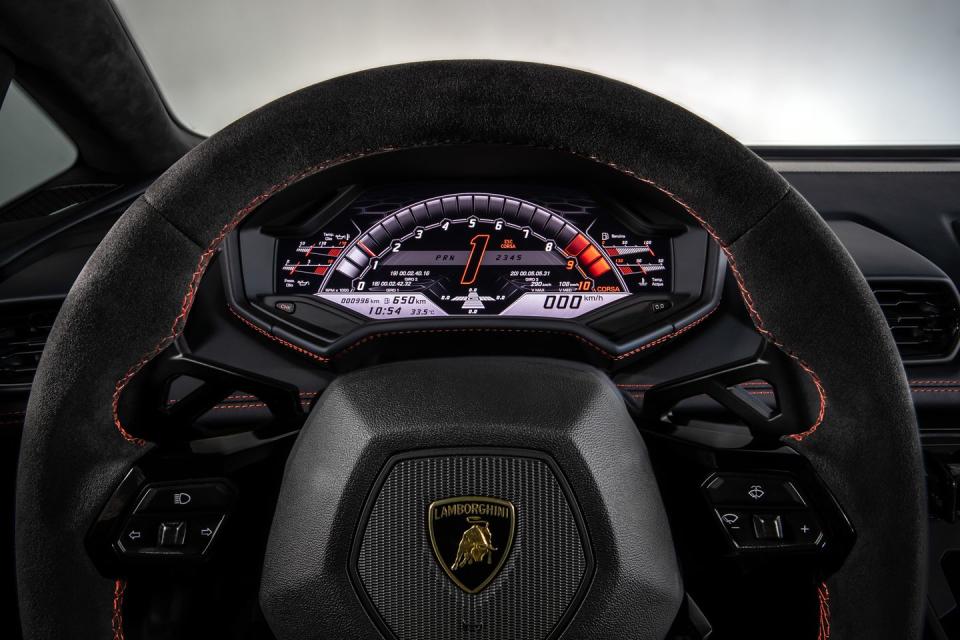The 2020 Lamborghini Huracán Evo Is a Better V-10 Supercar

The drawn-out life cycles of big-buck, low-volume vehicles mean that supercars face the same kind of mid-life crises that are typically ascribed to their owners. That's why we're now flooded with unending variations of mid-engined exotics. There are convertibles, performance specials, and even mid-cycle facelifts—just like your Hyundai Sonata! Arriving five years into the model's production lifetime, the 2020 Lamborghini Huracán Evo is just that, a freshening of Lamborghini's starter supercar. The Evo adds rear-wheel steering and a 29-hp injection to the Huracán's 5.2-liter V-10, raising output to 631 horsepower. Magnetorheological dampers and variable-ratio steering—optional on the outgoing Huracán—are standard on the Evo, and the old Audi-based infotainment system is replaced with an all-new Lamborghini-exclusive unit. And of course, the design team in Sant'Agata sandwiched the Evo between new front and rear ends with a fresh take on the timeless Lamborghini theme, which blends an unending love of hexagons with a narcissistic mindset.
The Evo builds on Lamborghini's newfound knack for weight-be-damned performance. The 2012 Aventador LP700-4 marked the transformation of Lambo's iconic wedges from creatine-huffing four-wheeled pinups to creatine-huffing athletes. Following in 2014, the Huracán demonstrated that Lambo's rejuvenated interest in vehicle dynamics wasn't a fluke. As evidence of its shifting priorities, Lamborghini even claimed the production-car lap record around the Nürburgring Nordschleife, twice—first with the Huracán Performante and later with the Aventador SVJ.
Starting at about $268,000, the Evo is less of a specialist than those track heroes. It's intended to be a daily driver for the South Beach set rather than a weekend lap dog. Nevertheless, Lamborghini confined our first drive to breakneck tours around the 15 turns of the 3.5-mile Bahrain Formula 1 circuit. Not that the roads in Bahrain would have revealed much. At its estimated top speed of 202 mph, the Evo would cross the entire country on flat, straight roads in less than 12 minutes.

Hard-Core Handling, Soft Brake Pedal
The Evo's many adaptive systems all run though the new Lamborghini Dinamica Veicolo Integrata, or LDVI if you can't fake the Italian. LDVI combines the old car's individual processors for the all-wheel-drive system, the adaptive dampers, and the stability control into a single computer that also manages the rear-wheel steering and Lambo's first use of brake-based torque vectoring. While the outgoing Huracán took its orders from a set of reactive algorithms, this new system uses feed-forward logic to predict the driver's intentions and sharpen or soften the car's responses accordingly. Lamborghini tells us that LDVI makes adjustments 50 times per second, juggling an unfathomable number of data channels. The computer considers 240 inputs including pitch, roll, yaw, acceleration in every direction, wheel positions, steering angle, the driver's social-media following, and how long ago the passenger last ate. Okay, we made up those last two, but there's got to be some fat in there, considering the computer spits out an incomprehensible 340 outputs. Even with all those variables in play, we found one consistent result: Driven fast, the Huracán Evo will always feed the driver's ego.
In Sport mode, the Evo playfully teases past the limits of the optional Pirelli P Zero Corsa PZC4 tires (regular P Zeros are standard). By imperceptibly squeezing individual brake rotors, the torque-vectoring program encourages the driver to corner with the tail out. The Evo's Corsa mode plays it straighter, stopping short of provoking slides but still divvying torque and pulsing brakes to hold a neutral attitude in bends, largely indifferent to the nuances of your corner-entry strategy. In either mode, it takes intention but not talent to initiate and control big slides. That's a result of a chassis that moves Lambo closer to the neutral-handling ideal that cars of this caliber deserve. The inert variable-ratio steering, however, leaves a lot to be desired. (There's also a street-oriented Strada mode, but we didn't dare waste any of our limited track laps using it.)

The Evo still doesn't have the front-end bite of a Porsche 911 GT car, nor does it feel as intense as the double-edged sword that is the McLaren 720S. Compared to that Brit, which will burn an inattentive or sloppy driver, this Italian feels less emotional, less challenging, less attuned to the driver's intentions. Instead, the Lambo is stable, planted, and forgiving. It barely wags its tiny ducktail spoiler when you combine a lateral load with threshold braking or a redline upshift.

 Yahoo Autos
Yahoo Autos 